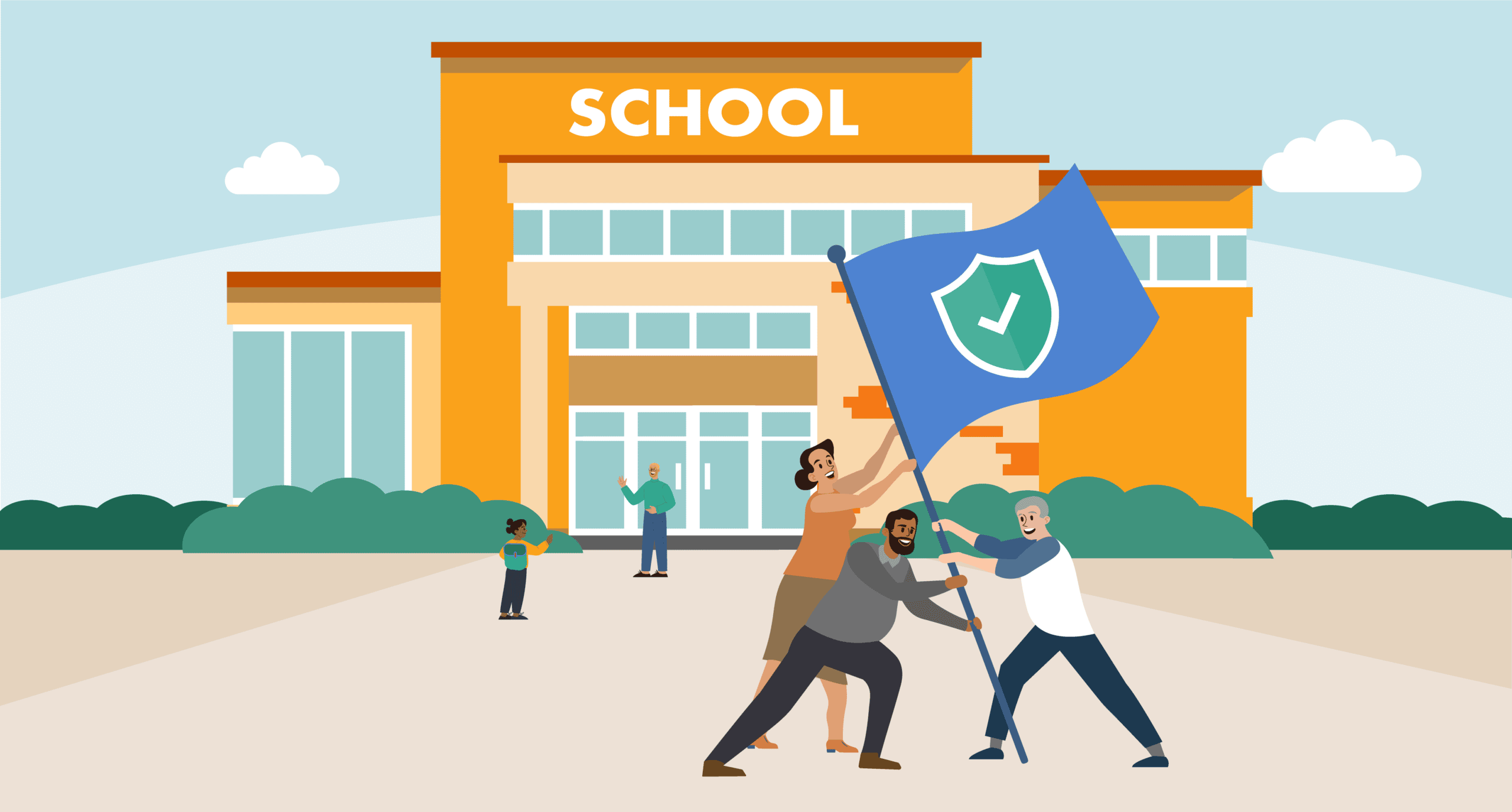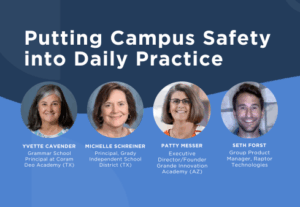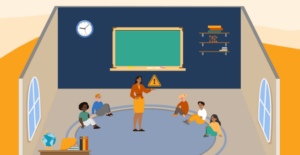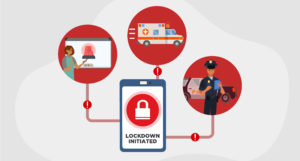Building a culture of school safety and wellbeing requires a collective effort from every person in the school community. From the front office staff to the bus drivers, every role plays an important part in creating a safe and healthy environment for students, staff, and volunteers.
Understanding how each role fits into the larger culture of school safety empowers schools and their personnel—as well as students and their guardians—to help strengthen their security stance.
Safety, security, and technology
School Resource Officers (SROs) play a vital role in supporting safety and wellbeing in schools. Their role is to maintain a safe and secure environment, respond to emergencies, and promote a culture of preparedness.
Safety and Security Directors are responsible for ensuring that schools are prepared for emergencies. They are responsible for emergency management, response planning, conducting drills, and fostering a culture of preparedness.
IT staff also support school safety by maintaining the school’s technology infrastructure and ensuring that the school is protected from cyber threats.
Administrators, Counselors, and Teachers
Administration sets the tone as leaders. From superintendents and district staff to principals in individual schools, fostering the development of an equitable and inclusive educational environment to supporting the development, implementation, and training on emergency operations procedures are top safety and wellbeing priorities.
Counselors play a critical role in promoting student wellbeing. They provide mental health support, notice changes in student behavior, and encourage students to speak up if they see their friends and classmates in distress. They could also provide support to colleagues who may need references to wellbeing resources or moral support.
With the most direct contact with students, teachers can build strong relationships with them. Teachers can use class rules, model safe and healthy language and behavior, and even incorporate social emotional learning opportunities to help support a positive culture of school safety and wellbeing. Additionally, teachers witness the day-to-day fluctuations in their students’ mood and behavior. They likely will be the first to notice absences, missed work, or decreased motivation, among other subtle cues that something might be going on with a student.
Support staff, transportation, and volunteers
Front office staff are the first point of contact for visitors and students as they arrive at school. They play a crucial role in screening visitors, creating a friendly and welcoming atmosphere, and promoting a culture of safety. Volunteers also play a vital role in enhancing student experiences, providing mentoring, and reducing teacher workload.
Bus drivers also play an important role in promoting a culture of safety and wellbeing. As the first and last point of contact between school and home, they are often the first to notice changes in student mood and behavior. They can play an important role in ensuring students feel safe on the bus, reporting bullying or other threatening behaviors so that it doesn’t escalate.
Meanwhile lunch staff and playground monitors can promote safety and wellbeing by interacting with students in a more social setting. By modeling safety and healthy behavior, they can help head off potential issues such as bullying, arguments, or isolation. Social times like meals and recess are prime times to pay attention to changes in classmate interaction, eating habits, and activity engagement on the playground as early indicators that a student or group of students may benefit from adults intervening to provide support.
School nurses and health care staff are a welcome sight for some students with chronic conditions and are adults a student can lean on when they aren’t at their physical or emotional best. A student who is uncomfortable reaching out for emotional support or speaking up about a stressful or harmful situation may first visit the health office versus the counselor’s office. These two departments can work together to identify ways to support students.
If your school provides before or after school care, don’t forget to connect with these care teams. Like lunch and playground staff, before and after school care teams have a front row seat to students’ social interactions. They are also in a unique position to have longer conversations about social emotional topics as well as notice daily changes in student behavior.
Students, their families, and their community
Students and their families contribute to school safety cultures, too. Providing opportunities for them to have a voice in safety and security conversations will encourage their engagement in reporting concerns. Let parents and guardians sit in on threat assessment practice sessions, and make sure students have easy, discrete ways to communicate with trusted adults—providing email access to guidance is a great way to support this.
Additionally, it is important to cultivate strong relationships with community partners, including local businesses, organizations, and community leaders. By doing so, the school can work together with these partners to support student success and create a positive impact on the surrounding community.
Building a culture of school safety and wellbeing requires the collective effort of every person in the school community. From the front office to the bus drivers, every role plays a crucial part in creating a safe and healthy environment for students, staff, and volunteers.
Raptor Can Help
Raptor’s full suite of solutions can assist school staff in their roles to build a school culture focused on safety and wellbeing.
Raptor Emergency Management can assist SROs and Safety and Security Directors in responding to emergencies by providing real-time information and communication tools. The system can also assist with emergency response planning and conducting drills.
Raptor Visitor Management can assist front office staff in screening visitors by providing real-time background checks and alerts for individuals who may pose a threat to the school.
Raptor Volunteer Management can assist in managing and tracking volunteer activities, ensuring that volunteers are properly screened and trained, and enhancing communication between volunteers and school staff.
Raptor StudentSafe can assist counselors in promoting student wellbeing by providing real-time alerts for students in distress, providing access to resources and support, and monitoring student behavior for early intervention.
Related Resources
GUIDE TO K-12 STUDENT WELLBEING
Strategies to Recognize, Document, and Support Students in Distress






